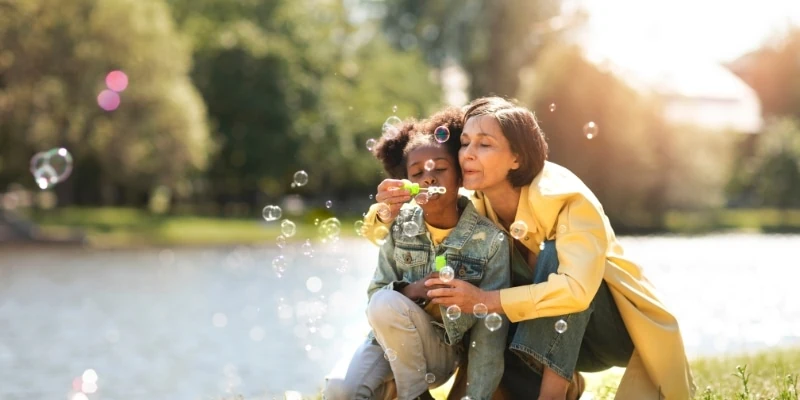Levine and Heller propose that adult attachment encompasses three primary attachment styles or behaviors, mirroring those observed in children: Secure, Anxious, Avoidant, and Disorganized. These attachment styles influence how individuals perceive and respond to intimacy within romantic relationships. The formation of these attachment styles is rooted in our childhood experiences with our parents. When parents are attuned and responsive to their children’s needs, a secure and stable parent-child relationship develops, fostering a secure attachment style.
Conversely, when parental responsiveness is lacking, or when individuals perceive their needs
as unmet, the likelihood of developing one of the three categorized insecure attachment styles increases.
The Evolution of Attachment Styles
Imagine hearing the news that your loved one was involved in a car crash. That sinking feeling in the pit of the stomach and the intensity of the emotions you feel would be your attachment system at work.
Attachment theory is based on John Bowlby’s theory that the need to be in a close relationship is embedded in our genes. It’s the idea that we have been created in a way that requires us to select a few specific individuals in our lives and make them an integral part of our life. We have been bred to be dependent on a significant other and the need starts in the womb and ends when we die. It has been asserted that the need to be near someone special is so important that the brain has a biological mechanism specifically responsible for creating and regulating our connection with our attachment figures (parents, children, and romantic partners). This mechanism is called the attachment system and it consists of emotions and behaviours that ensure we remain safe and protected by staying close to our loved ones. Hence, when children are parted from their mothers, they become frantic, search wildly or cry uncontrollably until they reestablish contact with their mothers. These reactions are called protest behaviours and even as adults, we may exhibit such behaviours.
Although we all have a basic need to form close bonds, the way we create them varies. In a dangerous environment, less harmful to rely on one individual as they cannot be trusted and are unreliable thus it would make sense to get less attached and move on, contributing to the avoidant attachment style. Another variable is an intensively toxic environment, it is pertinent to act in an opposite manner and be hypervigilant about staying close to your attachment figure, contributing to an anxious attachment style. In a more peaceful environment, the attachment created with the figure leads to an authentic and intimate creation of bonds, hence contributing to the secure attachment style.
Attachment Styles
Individuals with secure attachment styles tend to feel at ease with intimacy. On the other hand, those with anxious attachment styles often yearn for intimacy and frequently find themselves preoccupied with their relationships, often fixating on their partner’s ability to love them. In contrast, individuals with avoidant attachment styles tend to associate intimacy with a loss of independence and tend to distance themselves to maintain personal space. There are also those who exhibit a disorganized attachment style, which combines elements of both anxious and avoidant behaviors. This attachment style is commonly observed in individuals who have experienced physical, verbal, or sexual abuse during their childhood.
What Do Relationships Look Like in The Various Attachment Forms?
– Adults with a secure attachment style tend to be aware of their emotions and emotional needs and are able to both experience and express those. They are open and straightforward and do not go to extremes. Securely attached adults do not need reassurance in order to feel valued or worthy of love. They are able to accept displays of affection, without fear or confusion. They feel good on their own as well as in relationships.
– Adults with an anxious attachment style might think highly of others but often suffer from low self-esteem. These individuals are sensitive and attuned to their partners’ needs but are often insecure and anxious about their own worth in a relationship. They need constant reassurance that they are loved, worthy, and good enough. The strong fear of abandonment might often cause anxious adults to be intensely jealous or suspicious of their partners. They are often afraid of or even incapable of being alone.
– Adults with an avoidant attachment style might be very social, easy-going, and fun to be around. For avoidant adults, social interactions and bonds remain on the surface. In order for a relationship to be meaningful and fulfilling, it has to become deep. They tend to avoid strong displays of closeness and intimacy. As soon as things get serious, avoidant individuals are likely to close themselves off. They might be highly annoyed by their partner’s behavior, habit, or even physical appearance. Consequently, they start drifting off and distancing themselves from their partner.
– Adults with a disorganised attachment style fear intimacy and avoid proximity, similar to individuals with an avoidant attachment style. The main difference for disorganized adults is that they want relationships and have trouble believing that their partner will love and support them as they are. They expect rejection, believe it is inevitable and even when there are no signs of rejection, they will behave in a way that will lead to an end of the relationship.
Why Does This Matter?
Understanding our attachment styles is crucial because they provide insight into how we form and maintain all types of relationships, not just romantic ones. The decisions we make and the emotions and behaviors we exhibit are deeply influenced by our attachment styles, which, in turn, are shaped by our childhood experiences and the parenting behaviors we were subjected to. These experiences contribute to our sense of self, ultimately shaping who we are as individuals. Being aware of our attachment styles allows us to comprehend the underlying reasons for our emotions and behaviors. With this understanding, we can embark on a journey of self-acceptance and healing, empowering us to create the fulfilling life we envision for ourselves.”
References:
- Levin, A & Heller, R.S.F ( 2019). Attached.United Kingdom, UK: Bluebird
- https://www.attachmentproject.com/blog
- Bowlby, J.(1982). Attachment and Loss: Volume 1 Attachment.2nd ed. New York: Basic Books









